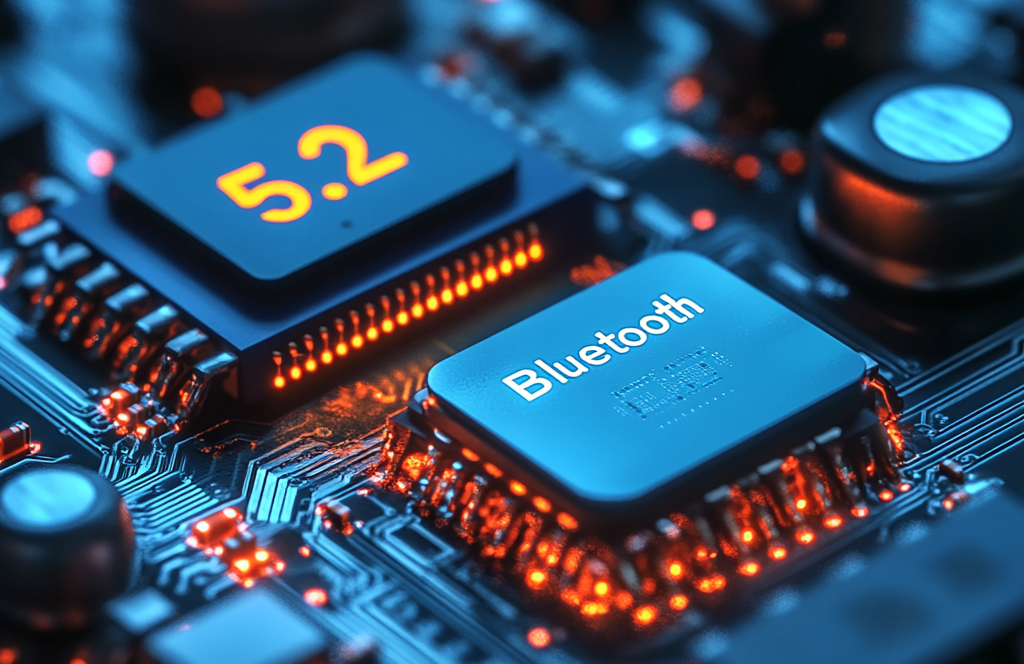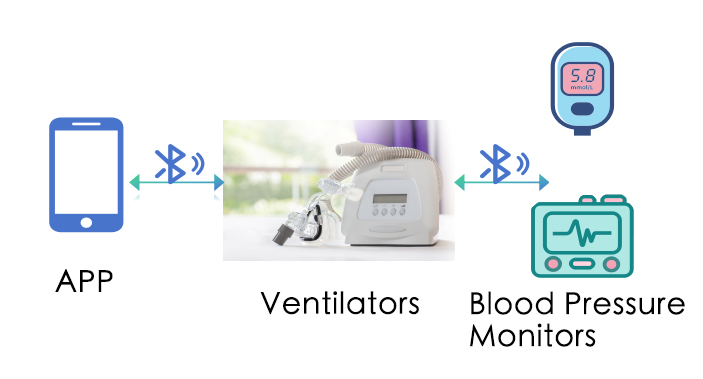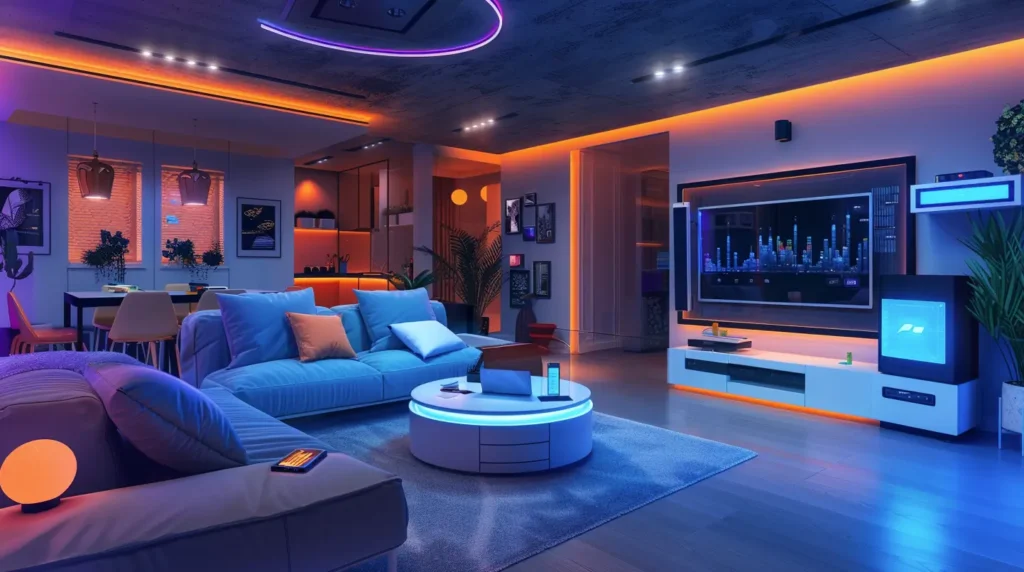
Want to prolong your device battery life without sacrificing performance? Bluetooth Low Energy (BLE) may be the solution, but its shortcomings could limit your product's abilities.
Bluetooth Low Energy (BLE) has many advantages such as reduced battery life consumption, lower power utilization, and cost-effectiveness, making it perfect for devices that employ BLE like fitness bands, smart watches, and wireless headphones. However, this comes with trade-offs: BLE's shorter range and lower data transfer rates compared to classical Bluetooth can create a bottleneck for some applications.
With respect to BLE, my own experience is that slower data speeds are a small price to pay for longer battery life. One shared experience comes from a smart home device I worked on, where our technical team developed the BLE aspect, because it was the key to our device being power efficient, though we battled slow transfer rates.
With these trade-offs you will have a decision for your product if BLE will make sense or not. First, let’s take a look at how BLE can be a benefit but also a challenge.
Bluetooth Low Energy (BLE) is a short-range communication protocol that allows devices to communicate with low energy consumption and no loss of operating distance for battery-powered devices. BLE is at the heart of this evolution, which is also driven by the Internet of Things (IoT) ecosystem, becoming more connected, compact, and energy-efficient with every passing day.
A Brief Overview of BLE — What is BLE Technology?
BLE stands for Bluetooth Low Energy, a wireless technology standard for data transmission that provides reduced energy consumption. BLE still operates in the same 2.4 GHz ISM band as classic Bluetooth, but is optimized for lower-power devices that only have to transmit data "on-demand" (unlike classic Bluetooth, where communications are generally bi-directional and more power-hungry). That makes it ideal for lots of IoT applications, where devices need to run on tiny batteries for long periods of time.
BLE (Bluetooth Low Energy), with peak current below 15mA, is ultra-low-power technology. This allows devices like fitness trackers, medical monitors and smart home devices to operate for months or even years on a single small battery. BLE also leverages its adaptive frequency hopping (AFH) to reduce interference while maintaining robustness in crowded wireless environments.
| BLE Feature | Description | Example Application |
|---|---|---|
| Ultra-low power consumption | Power consumption <15 mA peak | Fitness trackers, medical devices |
| Adaptive Frequency Hopping (AFH) | Reduces interference in crowded environments | Smart home devices, IoT sensors |
And the tech is also prevalent in internet of things (IoT) and consumer electronics, from healthcare devices such as heart rate monitors to smart lighting systems. Implementing BLE allows companies to create energy-efficient, portable products that connect to the fast-growing IoT network.
The global Bluetooth Low Energy (BLE) market is on a substantial growth trajectory, with the lowest point expected to be in 2024 and a peak anticipated in 2030. The adoption of endpoint devices, driven across multiple applications such as Healthcare, IoT, and smart homes supported by technology advancements, highlights the next-generation utility of the BLE.
The BLE market is expected to grow at a considerable rate, as it is used in a wide variety of applications, from consumer electronics and healthcare to wearable devices and IoT implementations.
Together with this, the market for BLE is anticipated to grow from $23.8 Billion in 2024 to $30.08 Billion by 2029 (CAGR: 4.7%). Some of the important factors driving the demand for this market include rapid rise in BLE beacon technology, growing adoption of healthcare wearables, and increasing requirement for smart home devices.
The BLE market’s growth is expected to be particularly strong in sectors that require low power consumption, such as healthcare wearables and smart home devices, where BLE’s energy efficiency provides a significant advantage.
Common use cases include but not limited consumer electronics, IoT devices and Bluetooth-enabled products. Smart homes, healthcare devices, and various other connected devices all have cranked up BLE adoption. BLE is projected to be even more essential to IoT applications, because the technology serves as the backbone for thousands of smart, connected devices.
This is expected to further boost the BLE market, as a increasing number of BLE-enabled devices in automotive, industrial automation, and healthcare sectors are expected to penetrate.
It is the novel features of BLE technology are the chief driver of BLE's market growth, including but not limited to better power efficiency and adaptive frequency hopping. These changes make BLE even more appealing for various application. Still, the use of VR for this purpose comes with its own set of challenges, namely around scalability and interoperability across devices and standards.
As the demand for Bluetooth Low Energy (BLE) continues to grow, addressing these challenges will be key to ensuring the technology becomes fully mainstream.
There are a few advantages of using Bluetooth low energy as it is mostly used in consumer electronics and connected devices that need low energy consumption.
BLE is optimized for low power consumption, low cost, compatibility, and scalability, making it suitable for IoT use cases. This is why it is an excellent solution for contemporary consumer electronics.
BLE (Bluetooth Low Energy) consumes much less power than Classic Bluetooth, perfect for devices that work on battery power. Such minimal power usage enables devices to operate for months or several years before replacing the battery needs to be carried out.
As an example, in the smart device world, BLE powers wearables, such as fitness trackers and medical monitors that can run for a long time while continuously transmitting data. A typical device in BLE will consume very low power, even as low as 15 mA peak, which results in a long battery life.
| Feature | BLE Consumption | Traditional Bluetooth Consumption |
|---|---|---|
| Power Usage | <15 mA peak | >50 mA peak |
| Battery Life | Months/Years | Weeks/Months |
| Ideal Use Cases | Wearables, IoT devices | Audio devices, high data transfer |
BLE is not only power-saving but cost-effective too. BLE components are also generally cheaper than alternatives such as Zigbee or Wi-Fi, which brings cost savings for both manufacturers and end-users. The adoption of BLE across different sectors such as IoT and healthcare has accelerated due to it providing a low-cost solution for connected devices.
| Technology | Average Component Cost | Common Use Cases |
|---|---|---|
| BLE | Low cost, efficient | Wearables, healthcare, IoT |
| Zigbee | Moderate cost | Home automation, industrial |
| Wi-Fi | Higher cost | High data throughput, routers |
A unique feature of BLE is its wide range of device compatibility. The vast majority of smartphones on the market today support BLE out of the box, making it simple to create apps and devices which use it. And due to BLE's simplicity and broad compatibility, developers enjoy reduced development costs that help accelerate market entry.
Its ubiquitous, low-overhead interoperability across a multitude of platforms along with its easy integration into new and legacy devices positions it as a true enabler of the connected ecosystem.
BLE supports up to 40 devices simultaneously connected simultaneously and therefore an excellent choice for IoT applications where many devices interact with each other. This guarantees smooth data transfer between the client devices and the access point, even in challenging high-density scenarios.
In other words, Imagine BLE enabling communication between smart bulbs, smart thermostats, and sensors in smart homes making them work efficiently without flooding the system.
Bluetooth Low Energy (BLE) is quickly emerging as a cornerstone of IoT development, due to its unique combination of power efficiency, scalability and robustness. As its impact grows diverse IoT applications, BLE is powering smarter and more efficient systems in sectors such as healthcare, home automation, and location-based services. BLE's versatility in accommodating numerous devices and its exceptional energy efficiency result in precise, long-range connections.

BLE is designed to handle many types of IoT applications. It has low power consumption and strong connectivity over substantial distances, which allows devices to communicate over greater distances without using up battery life. Therefore, it is well suited for smart cities, smart homes, and industrial IoT systems.
For example, BLE’s low-energy consumption means that it can be implemented in sensors, smart meters and various IoT devices that only require sporadic maintenance or battery changes. Additionally, its long-range capabilities make it possible to communicate in multiple smart networks from wearables to industrial applications.
| IoT Application | Key Benefits | Example Product/Use Case |
|---|---|---|
| Smart Homes | Low power, long range | BLE-enabled smart lighting |
| Industrial IoT | Reliable, scalable | Smart sensors in factories |
| Healthcare Wearables | Energy efficiency, precision | Fitness trackers, heart rate monitors |
BLE’s integration into smart home systems has transformed how we interact with our living spaces. With BLE-enabled devices, homeowners can control everything from lighting and thermostats to security cameras and locks. The technology’s ability to provide energy-efficient solutions with low latency improves the overall user experience, offering convenience without compromising on battery life or connectivity. For example, in a smart home environment, BLE can enable seamless communication between devices like smart bulbs, door locks, and thermostats. These devices not only benefit from BLE’s long battery life but also interact efficiently with mobile apps, enhancing user engagement and energy savings.

The healthcare industry is benefiting greatly from BLE’s capabilities, especially in wearables and medical devices. BLE enables real-time monitoring of critical health metrics such as heart rate, blood pressure, and glucose levels, while maintaining energy efficiency to prolong battery life. Devices like fitness trackers, blood glucose monitors, and pulse oximeters can operate for extended periods without the need for frequent recharging. The combination of long-range connectivity and minimal power usage makes BLE an ideal choice for continuous health monitoring, where devices need to communicate data without draining the battery.
BLE is increasingly used in location-based services due to its precision and low latency. BLE beacons, which can transmit signals to nearby devices, offer accurate indoor positioning, making it ideal for applications in retail, healthcare, and logistics. For example, in hospitals, BLE can be used to track the location of medical equipment or patients in real-time.
The ability of BLE to offer precise positioning, combined with its low energy requirements, is transforming how businesses use location tracking to improve efficiency and user experience.
Bluetooth Low Energy (BLE) is becoming a vital component across numerous industries due to its energy efficiency, scalability, and reliability. From smart lighting to automotive applications, BLE is driving innovation and transforming how we interact with connected devices in everyday life. BLE’s diverse range of applications in smart lighting, retail, automotive, and industrial IoT showcases its potential to enhance operational efficiency, user experience, and connectivity.
BLE has revolutionized smart lighting solutions by offering greater flexibility and control over traditional systems. With BLE-enabled smart bulbs, users can adjust lighting intensity, color, and even schedule lighting to enhance their living or working environments. One of the key benefits is BLE's ability to create a mesh network, enabling communication between multiple devices without the need for a central hub. This technology also helps reduce energy consumption by optimizing lighting schedules and allowing for remote control of lights, providing a smarter, more sustainable solution for homes and businesses alike.
| Smart Lighting Feature | Benefit | Use Case |
|---|---|---|
| BLE Mesh Network | Extends connectivity range | Seamless control across a building |
| Energy Efficiency | Reduces power consumption | Automated lighting schedules |
| Remote Control | Convenient operation | Smart home integration |
In retail, BLE is widely used for asset tracking and inventory management. BLE beacons placed throughout stores can communicate with customer smartphones to send personalized offers or guide them to specific products. This proximity-based marketing enhances the customer experience, driving sales and engagement. Additionally, BLE’s role in asset tracking allows businesses to monitor the location and status of inventory in real-time, improving efficiency and reducing loss. For example, BLE-enabled tags can be used on products and equipment to monitor their movement throughout a supply chain.
| Retail Application | BLE Benefit | Example Use Case |
|---|---|---|
| Proximity Marketing | Personalized offers | Targeted promotions in stores |
| Inventory Management | Real-time asset tracking | Monitoring stock levels |
| Supply Chain Efficiency | Streamlined logistics | Tracking goods across warehouses |
In the automotive sector, BLE is being used for a variety of applications, from car connectivity to remote monitoring. BLE allows for hands-free access to vehicles through mobile apps, enabling features such as remote start, keyless entry, and location tracking. It also plays a crucial role in vehicle-to-vehicle communication, which is essential for the development of autonomous vehicles. Moreover, BLE enhances vehicle diagnostics by enabling real-time monitoring of engine performance, tire pressure, and other critical systems. This ensures better preventive maintenance and a more efficient driving experience.
| Automotive Application | BLE Benefit | Example Use Case |
|---|---|---|
| Keyless Entry | Remote vehicle access | Mobile app car unlock feature |
| Vehicle Diagnostics | Real-time performance data | Tire pressure, engine health |
| Autonomous Vehicles | V2V Communication | Communication between cars |
The Industrial Internet of Things (IIoT) relies heavily on BLE for factory automation and industrial monitoring systems. BLE enables the connection of machines, sensors, and devices in a factory setting, allowing for real-time data collection and analysis. This improves efficiency, reduces downtime, and enhances safety by providing continuous monitoring of equipment conditions. BLE’s low power consumption is especially beneficial in industrial environments, where devices may need to operate for long periods without frequent battery changes. Additionally, BLE’s scalability makes it ideal for industrial settings with numerous devices communicating simultaneously.
| IIoT Application | BLE Benefit | Example Use Case |
|---|---|---|
| Equipment Monitoring | Continuous, real-time data | Monitoring machinery performance |
| Predictive Maintenance | Energy-efficient sensors | Anticipating equipment failures |
| Factory Automation | Low power, scalable system | Automating production lines |
Despite its limitations in data speed and range, BLE’s ability to extend battery life, improve efficiency, and reduce costs makes it a preferred choice in modern device design. Its applications in health monitoring, smart homes, and location tracking are driving innovation and enhancing user experience. With ongoing advancements and rising demand, BLE’s influence is set to grow across industries.
If you're considering implementing BLE technology in your product, contact us today. We can help you assess whether BLE is the right fit for your needs and provide technical support to ensure your devices achieve the perfect balance of functionality, battery life, and performance.
